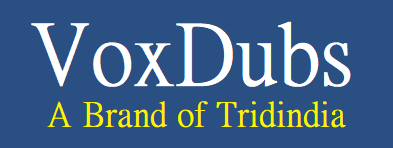Dubbing, the art of replacing the original audio of a video with a translated version in another language, has the power to bridge linguistic barriers and make content accessible to a global audience.
When executed well, dubbing can enhance the viewer’s experience, but when it goes awry, the result can be jarring and detract from the intended message.
In this blog, we will delve into the world of bad dubbing, exploring what it is, the factors that contribute to it, and the consequences it can have on the overall viewer experience.
Understanding Bad Dubbing
Bad dubbing refers to the situation where the dubbed audio does not synchronize well with the visuals, lacks emotion, or feels unnatural. It disrupts the immersion that comes with seamless integration of voices and visuals, hindering the viewer’s ability to connect with the characters and the story.
Factors Contributing to Bad Dubbing
Several factors can contribute to the phenomenon of bad dubbing. Let’s explore some of the key reasons why dubbing can go wrong:
1- Translation Errors: Accurate translation is essential for maintaining the authenticity of the content. When the translation is inaccurate, idiomatic expressions, cultural references, and even the core meaning of dialogues can be lost in translation, resulting in confusion or misrepresentation.
2- Lip Sync Issues: One of the most noticeable aspects of bad dubbing is when the dubbed audio does not match the lip movements of the characters on screen. Proper lip syncing is critical for creating a seamless viewing experience, and any misalignment can be distracting and off-putting.
3- Emotional Disconnect: Voice actors need to convey the emotions and nuances of the original characters. If the voice acting lacks emotion, conviction, or proper modulation, the impact of the dialogue and the characters’ personalities can be lost, leading to a lackluster performance.
4- Cultural Context: Cultural differences play a significant role in language and expression. When dubbing does not consider the cultural context of the target audience, the content may come across as insensitive or simply not relatable.
5- Voice Casting: Selecting the right voice actors is crucial for maintaining consistency and believability. Inappropriate voice casting can result in voices that do not match the characters’ personalities, which can disrupt the viewer’s suspension of disbelief.
6- Sound Quality: Poor audio quality, including background noise, echoes, or uneven sound levels, can degrade the overall experience and make the dubbing seem unprofessional.
Consequences of Bad Dubbing
Bad dubbing can have far-reaching consequences that impact both the content creators and the audience:
1- Loss of Viewer Engagement: When the dubbing is subpar, viewers may find it difficult to connect with the characters and the storyline. This results in a diminished emotional impact and reduced engagement with the content.
2- Negative Perception: Poorly dubbed content can reflect negatively on the quality of the production as a whole. Viewers may perceive the entire project as amateurish or not well thought out.
3- Audience Turnoff: Instead of expanding the audience reach, bad dubbing can actually turn off potential viewers. They might abandon the content due to the discomfort caused by unsatisfactory dubbing.
4- Diminished Authenticity: Authenticity is a critical factor in storytelling. Bad dubbing can erode the authenticity of the characters, making their actions and reactions seem disconnected and unnatural.
Avoiding Bad Dubbing: Best Practices
To prevent falling victim to bad dubbing, content creators and dubbing agencies should adhere to certain best practices:
1- Accurate Translation: Work with skilled translators who not only have language proficiency but also a deep understanding of cultural context and idiomatic expressions.
2- Professional Voice Actors: Choose voice actors who are not only fluent in the language but also possess the acting skills to convey emotions effectively.
3- Lip Sync Precision: Ensure that the dubbing process includes meticulous lip syncing to maintain the natural flow of dialogue.
4- Quality Control: Implement rigorous quality control measures at every step of the dubbing process to identify and rectify any issues.
5- Cultural Adaptation: Tailor the dubbed content to suit the cultural sensibilities of the target audience, making the experience more relatable and engaging.
In Conclusion
Bad dubbing is a pitfall that can hinder the success of otherwise promising content. It disrupts the connection between characters and viewers and compromises the authenticity of the story.
By understanding the factors that contribute to bad dubbing and implementing best practices, content creators and dubbing agencies can ensure that their efforts result in a seamless, emotionally resonant viewing experience that transcends linguistic boundaries.
Remember, the goal of dubbing is not just to convey words, but to capture the essence and spirit of the original content in a new language, enriching the global entertainment landscape.
For more information contact VoxDubs at +91-8527599201 or grab an instant quote.
